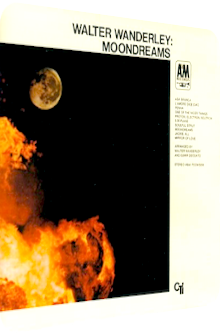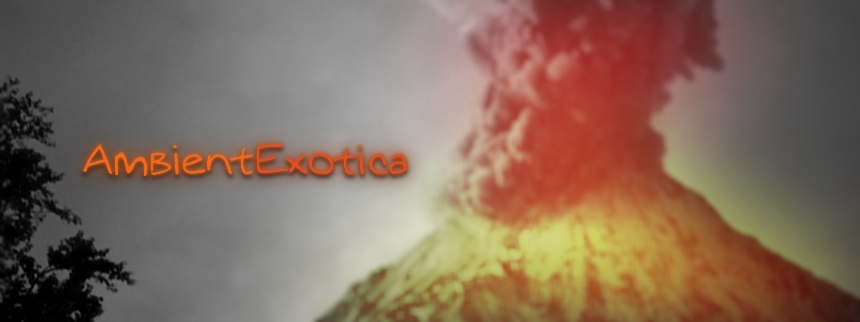
Walter Wanderley
Moondreams
1969
The landing on the moon is the utmost important and boundary-breaking incident of the 21st century, hued in positivism, a landmark of technocracy. As such, it provides the truth that has always been radiated in Space-Age albums: technology is going to save us all, or what else to call the wonders of nogahyde, optimized seeds and perennial colors for one’s front porch. Not so surprisingly, Brazil’s premier organist Walter Wanderley (1932–1986) falls prey to the lure of the moon, the result being a superb amalgamation of Hammond organ vestibules, electric harpsichord fusillades, cherry violas, a smooth brass hydrazine as well as gleeful vocals. These entities become enmeshed in an aural propulsion called Moondreams.
Recorded on three consecutive days in March 1969 and released in the same year on A&M Records, it is a costly affair due to the huge amount of musicians and instruments involved in the studio. Wanderley is clearly and rightfully in the limelight and foreshadows the success of the big event that has yet to come, but his balmy organ droplets are skillfully underlined and at times even outshadowed by the talent of drummer Joao Palma, trumpeter Bernie Glow, the vocal allure of Flora Purim, Linda November, Stella Stevens and Susan Manchester as well as the whopping amount of eight viola players, five flutists, three bassists and a bag of surprises. How, then, is the organist able to plant the lush greenery of Rain Forest (1966) into space?
The moon is close, the rocket is waiting, Walter Wanderley transforms the Samba-filled streets into an aeriform milky way on the opener Asa Branca. Originally composed by Humberto Teixeira and Luiz Gonzaga, the bandleader kicks off the spacy mélange with his raspy holiness, the electric harpsichord whose plinking laser pulses conflate with the car horn autochthony of the Hammond organ. Joao Palma’s sizzling hi-hats are cautiously accompanying the coruscating enigma. Euphonious and later greatly underlined by melodious chords, the standard eventually leads to Wanderley’s own L’Amore Dice Ciao, a mauve-tinted Space-Age ditty with mixed choirs, Bernie Glow’s flügelhorn sinews that evoke Brazilian melancholy and last but not least, polyrhythmic cannelures that range from 4/4 boosts to Waltz flares.
The bandleader continues the journey with another original: Penha is a laid-back Gothic beach scenery that shuttles between Baroque powder and sun-dappled chords from Rio, all the while Jimmy Webb’s One Of The Nicer Things vaporizes a gorgeous New Age-oid paradise of cauterized organ blebs and polylayered flute washes. With no care in the world and insouciance revved up to the max, side A closes with Wanderley’s stacked bleepfest Proton, Electron, Neutron whose calcined trumpet emissions are alloyed by twinkling organs and rounded off by a gurgling-hollow bongo beat.
Jimmy Webb’s 5:30 Plane greets the listener on side B, making the traveler aware of the fact that orbit has to be reached yet again. However, said plane is poised to take off for sure as the English lyrics of the Space-Age choir intermix with the soothing loungerie of eight violas, lift muzak percussion and crisp harpsichord splinters. Mellifluous and auroral, the next stop comes soon enough in the shape of a saffron-colored Eugene Record‘s and Sonny Sanders’ Soulful Strut that evokes the Brazilian way of life as best it can. An uplifting moiré of iridescent organ vesicles and scintillating harpsichord helixes tumbles around trumpet protrusions, George Duvivier’s bubbly bass and several flute flumes par excellence.
Norman Petty’s title-lending gold standard Moondreams follows suit. Made popular by Budy Holly, Wanderley and his men turn things around by focusing on pre-Disco legato washes, glistening slivers and a transformed show tune physiognomy before George Benson’s and Will Downing‘s Jackie All comes into play. Functioning as sort of a an appendix, it keeps both the pace and textures and embeds the mellifluous brass layers in thickly wadded viola-based cushions of cotton candy. Ray Davies’ Mirror Of Love closes the album via luring English Space-Age lyrics, multiplexed organ cataracts and a decortication based on the Hammond organ. The harmony is once again ultra-catchy, making the closure of the album all the more painful. Hit repeat and fly away one more time!
Walter Wanderley’s Space-Age opera is a stupendous trip that works so fantastically well due to its easygoing atmosphere. In lieu of multitudinous textures and extravagant riffs, it is the close encounters of the textures and their symmetry that make this album a feast for the senses. Both Wanderley’s electric harpsichord and organ are the ever-important devices of every arrangement. They remain in the limelight for obvious reasons, but it is still astonishing how effective the gyration tendency and titration process work to the album’s advantage. There seems to be a lactal veil spanned over the whole recording. Like a crimson reticulation it soothes the soul and alters the perception, but doesn’t degrade the high fidelity of the record, nor is it prone to limewash the luminescence.
Even the harpsichord, while clearly being the roughest and hardest-to-tame inclusion of Moondreams, still emits a certain magic timbre that is otherwise amiss in Henry Mancini’s over-the-top productions where it harms the balance; Music Of Hawaii (1996) and Symphonic Soul (1975) come to mind in particular. Not so on Wanderley’s album: the occasionally incongruent timbre ennobles the lactal listening experience and makes a galactic corker out of an album that is otherwise bound by gravity, as shown in the Samba-oriented material. It is even more disturbing that the album has not yet been reissued or remastered, so the vinyl version or rips thereof need to do it in the meantime.
Exotica Review 398: Walter Wanderley – Moondreams (1969). Originally published on Dec. 13, 2014 at AmbientExotica.com.
